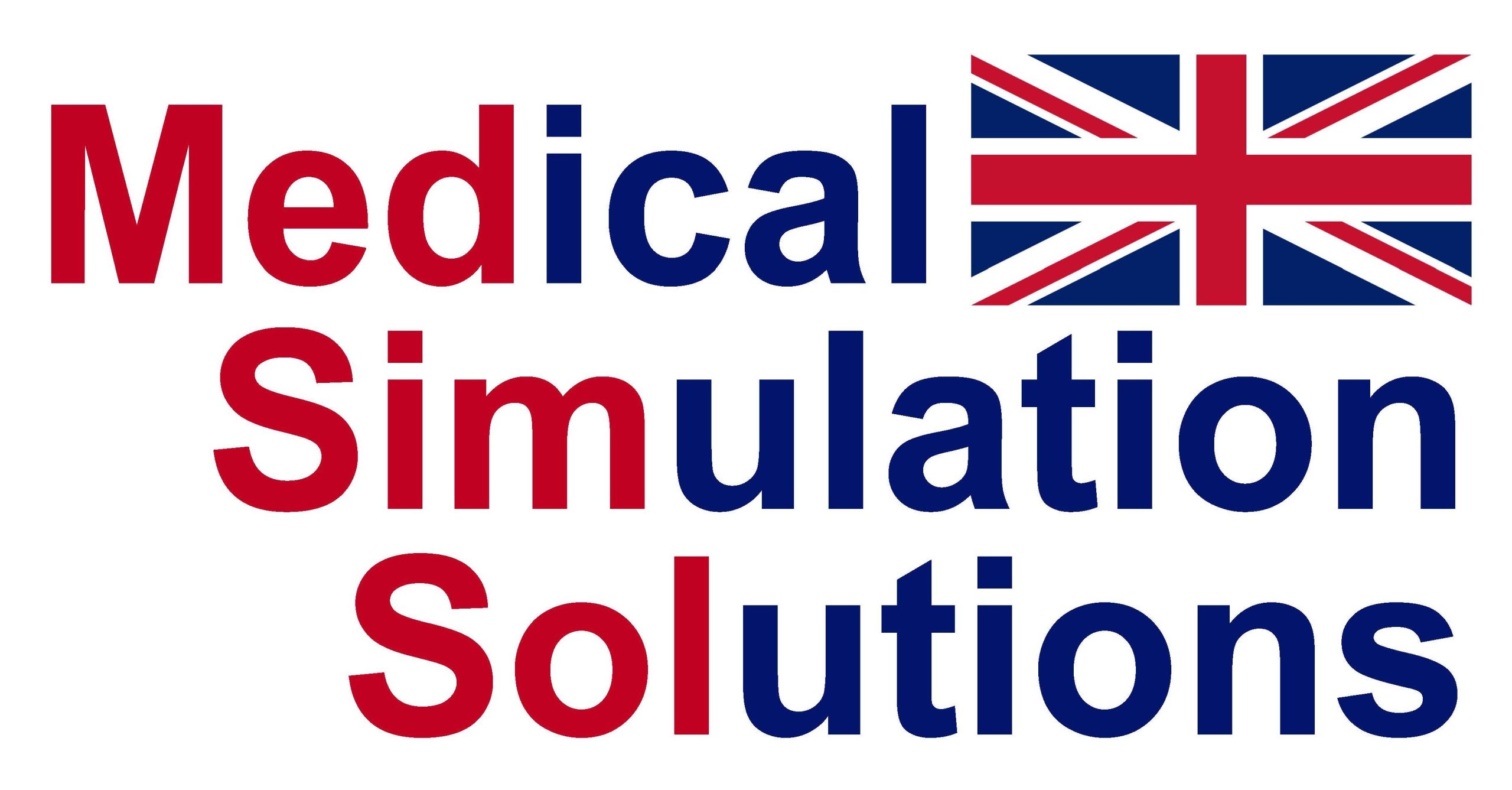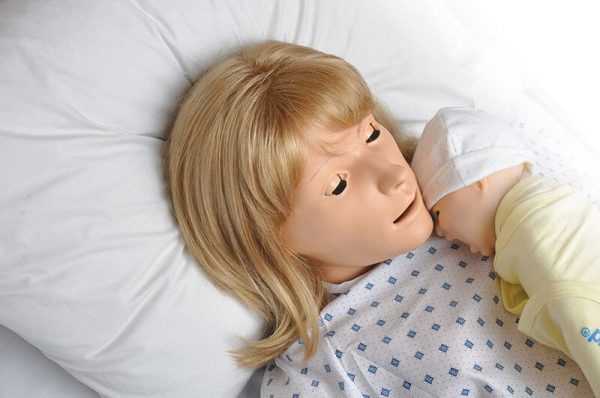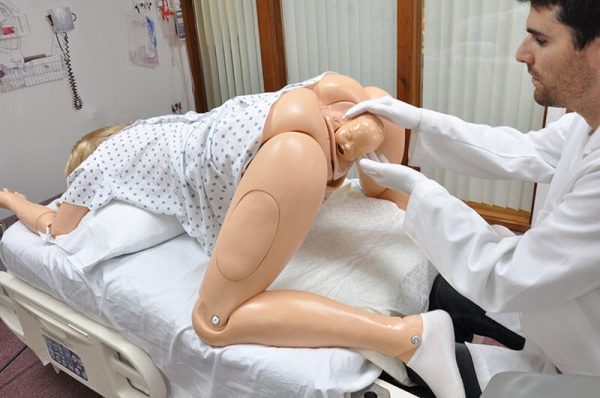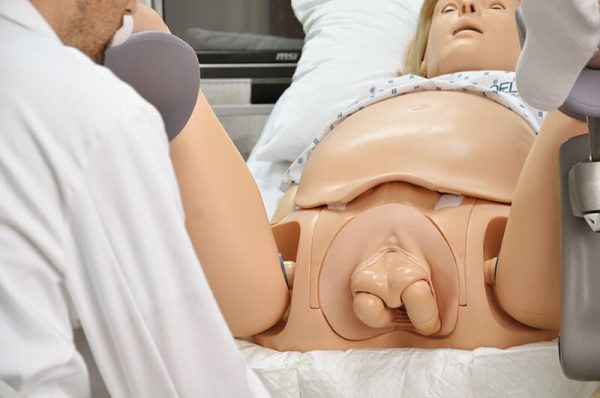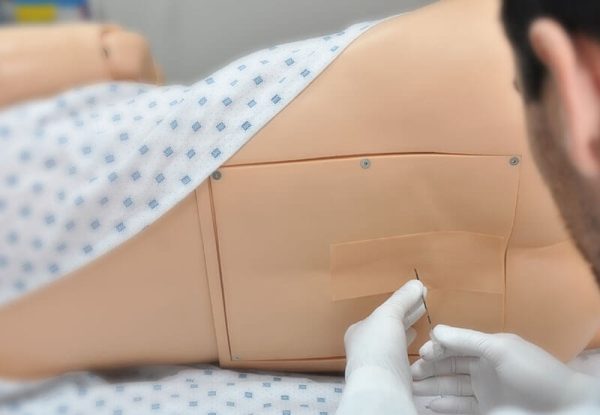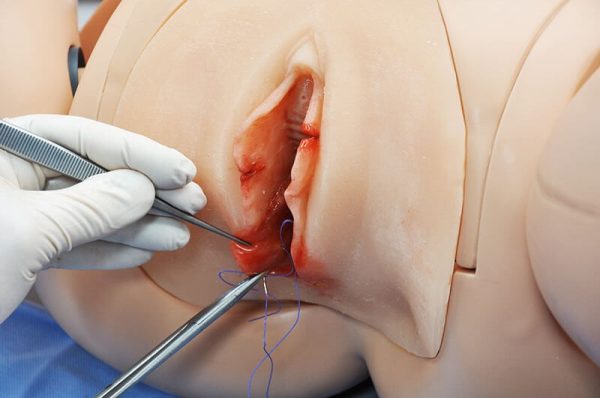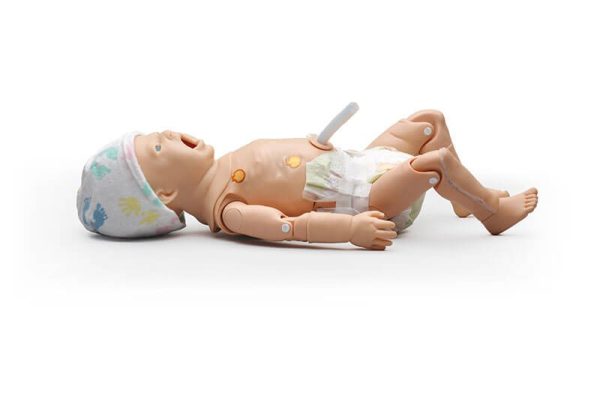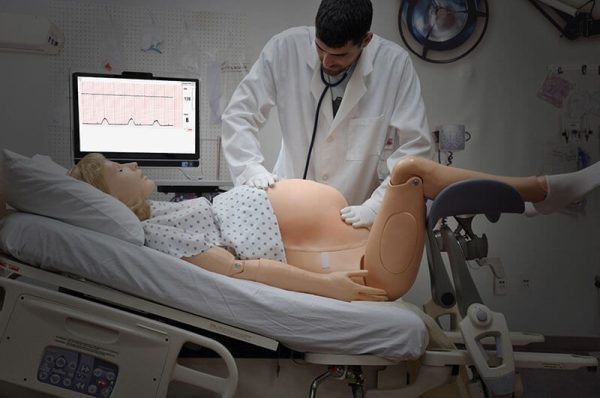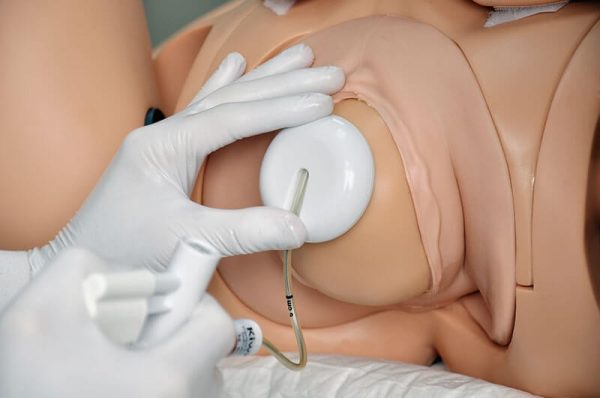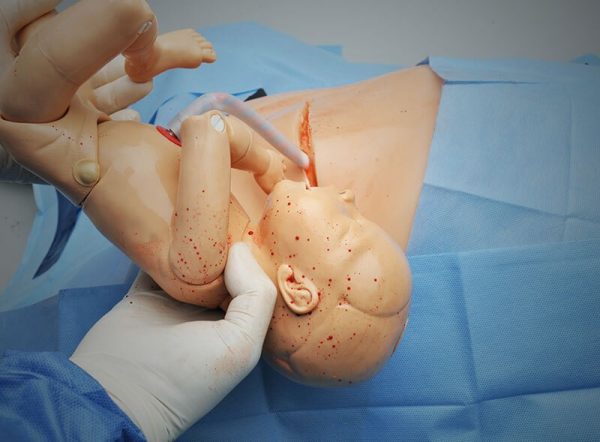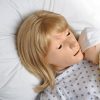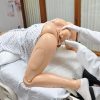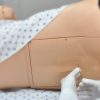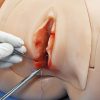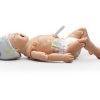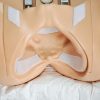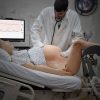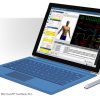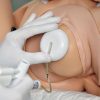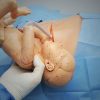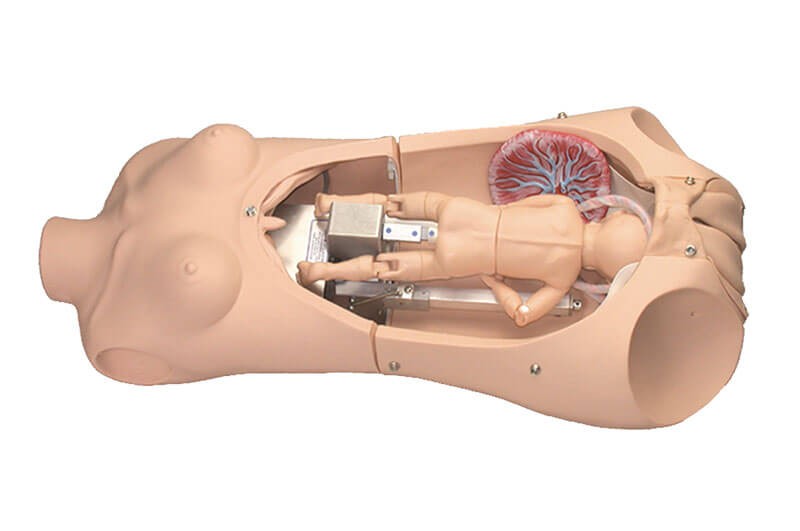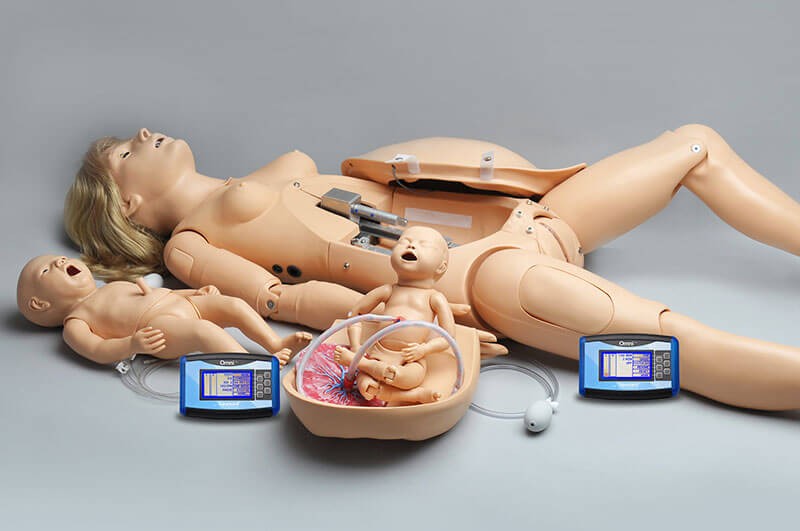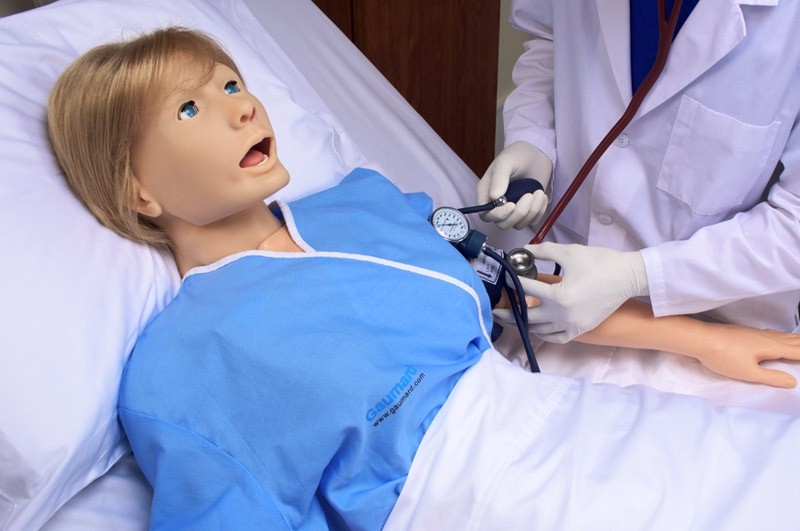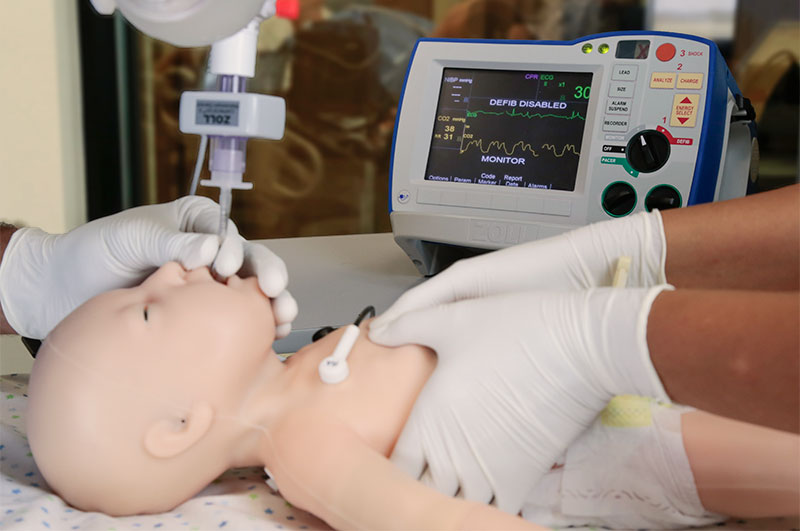Description
NOELLE Features
Anatomy
Weight 32kg
Height 175 cm
Realistic neck, shoulder, elbow, hip, knee, and ankle articulation
Allows supine or semi-recumbent positions
Roll to left lateral position
Supports birthing on stirrups, foot paddles, and gaskin position
Wireless Connectivity
Tetherless and fully responsive even while being transported
Wireless control at distances of up to 300ft.
Internal rechargeable battery provides up to 3 hrs. of tetherless operation
Supports continuous operation on AC power
Pneumatic and fluid reservoirs are housed inside the body
NOELLE® Fetus-Newborn wireless link capability
Labor and Delivery
Automatic and fully programmable birthing mechanism simulates descent and cardinal movements
Precise labor scenario repeatability for competency based training and assessment
Preprogrammed library of 49+ scenarios included
Delivery warp factor; simulate lengthy labor scenarios as fast as 2 minutes
Easily create, share your own scenarios
Change maternal, fetal or delivery conditions on-the-fly
ROA, LOA,LOP or ROP positions simulate OA or OP deliveries
Palpation abdominal cover features fetus in an amniotic sac for realistic Leopold’s and version exercises
Practice epidural procedures on a spinal cord insert with skin layer, subcutaneous layer, connective tissue, and
lumbar vertebrae
Epidural placement detection
Monitor traction applied to the fetal head and body
Anatomic landmarks include bilateral ischial spines, coccyx and pubic bone
Realistic birth canal with dilating cervix
Fetus rotates, dips and rises during delivery
Palpable contractions
Programmable intrapartum bleeding
Simulate placenta previa, retained placenta, and retrained fragments complications
Simulate cord complications including nuchal cord, cord prolapse, true knots
Replaceable cord supports clamping and cutting
Shoulder Dystocia
Realistic retraction of the fetal head against the perineum
Turtle signs are synchronized with contractions and fetal heart rate shown on the fetal monitor
Strong hip-joints allow for McRoberts maneuvers
Programmable dystocia so that each student receives exactly the same scenario
Supports Wood’s screw, arm sweeps, Lovset, and more
Breech Presentation
Articulating hip and knee joints allow realistic Frank, complete, and footling breech delivery simulations
Instrument Assisted Delivery
Supports forceps and vacuum-assisted delivery using real instruments
C-Section
Supports abdominal incision using real surgical instruments
C-section abdominal skin features subcutaneous, fascia, rectus muscle, and peritoneum
Preprogrammed C-section scenarios included
Postpartum
Palpable fundus with programmable uterine contractions
Internal 1L hemorrhage reservoir
Uterine bleeding
Manage uterine hemorrhage using medications or a balloon tamponade
Episiotomy repair inserts simulate human tissue that can be sutured closed repeatedly
Birthing Fetus
Vertex and breech fetus included
Head features fontanelles and sutures
Head cover for forceps or vacuum augmentation during delivery
Head flexes as it moves through birth canal
Jointed arms and legs allow advanced obstetrical maneuvers
Suction mouth
Dynamic Perinatal Monitor
Programmable uterine activity
Control frequency, duration and intensity of contractions, resting tone, decels
On-demand contractions
Program fetal heart rate and baseline, variability
Control episodic, periodic, and variable changes
Generate FHR patterns at any time
Virtual external fetal monitoring or the fetal spinal electrode tones
Review up to 2 hours of recorded fetal tracings
Save/print fetal tracings for debriefing
Airway
Program tongue edema and pharyngeal swelling
Multiple upper airway sounds synchronized with breathing
Nasal or oral intubation
Sensors detect depth of intubation
Head tilt/ chin lift, jaw thrust
Bag-Valve-Mask ventilation
Placement of conventional airway adjuncts
Endotracheal intubation using conventional ETTs
Sellick maneuver brings vocal cords into view
Breathing
Automatic chest rise is synchronized with respiratory patterns
Independent left or right lung sounds synchronized with breathing
Ventilation may be assisted using BVM, ETT, or LMA
Ventilations are measured and logged
Detection and logging of ventilations and compressions
Simulated spontaneous breathing
Variable respiratory rates and inspiratory/expiratory ratios
Bilateral chest rise and fall
Normal and abnormal breath sounds
Anterior auscultation sites
Cardiac
eCPRTM Real-time CPR performance monitor and trainer
Chest compressions generate palpable blood pressure wave form and ECG artifacts
Normal and abnormal heart sounds
Heart sounds synchronized with ECG
ECGs are generated in real time with physiologic variations
Optional automatic mode allows to show virtual dynamic ECG rhythms for each of the 12 leads
Circulation
Measure blood pressure by palpation or auscultation using real instruments
Korotkoff sounds audible between systolic and diastolic pressures
Oxygen saturation detected using real monitors
Pulse sites synchronized with BP and heart rate
Bilateral IV arms with fill/drain sites
Optional drug recognition system
SubQ and IM injection sites
Chest compressions are measured and logged
ECG monitoring using real devices
Defibrillate, cardiovert and pace using real devices
ECG rhythms are generated in real time
Bilateral carotid, radial, and brachial pulses synchronized with ECG
Pulses vary with blood pressure, are continuous and synchronized with the ECG even during a paced rhythm
Neural Responses
Programmable blinking, dilation and eye response to light
Programmable duration and intensity of convulsions
Speech
Prerecorded responses
Standard two way wireless streaming audio
Create and store vocal responses in any language
Instructor can simulate patient’s voice and listen to caregivers conversation wirelessly
Be the voice of the simulator and hear responses at distances up to 50 meters
Other
Newborn HAL Specifications
Appearance and Anatomy
Age: 40 week
Weight 2.4 kg
Length 53 cm
Realistic joint articulation: shoulders, elbow, hip, and knees
Programmable muscle tone: bilateral or unilateral arm movement, reduced,
and limp
Wireless Connectivity
Tetherless and wireless; fully responsive even while being transported
Wireless control at distances of up to 300ft.
Internal rechargeable battery provides up to 3 hrs. of tetherless operation
Pneumatic and fluid reservoirs are housed inside the body
NOELLE Fetus-Newborn wireless link capability
Airway
Oral and nasal intubation
Use an ET tube or LMA
Multiple upper airway sounds synchronized with breathing
Programmable crying/grunting sounds
Intubation depth detection and logging
Neck hyperextension airway obstruction with event capture and logging
Breathing
Spontaneous breathing
Control rate and depth of respiration and observe
Ventilation is measured and logged
Select left and/or right chest wall movement and lung sound
Chest rise and lung sounds are synchronized with selectable breathing patterns
Accommodates assisted ventilation, including BVM and mechanical support
Cardiac
Comprehensive ECG rhythm library
ECG monitoring using real devices
eCPRTM Real-time CPR performance monitor and trainer
Effective chest compressions generate palpable pulses and ECG activity
Healthy and abnormal heart sounds
Virtual pacing and defibrillation
Circulation
Programmable cyanosis
Multiple heart sounds, rates and intensities
Fontanelle, umbilical, and bilateral brachial pulses
Pulse strengths vary with blood pressure and pulses are synchronized with ECG
Bilateral dorsum of hand IV access
Patent umbilicus
Supports umbilical cutdown
Umbilical vein and arteries support catheterization and infusion
Intraosseous access at tibia
Left foot IV access
Blood pressure measurement using real modified BP cuff.
Digestive/Urology
Interchangeable female and male genitalia
Urinary catheterization with urine output
Selectable bowel sounds
